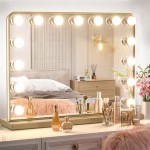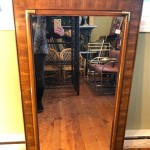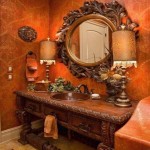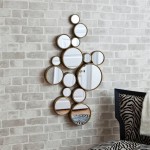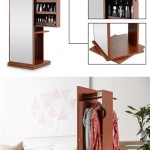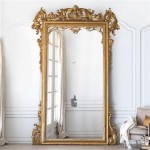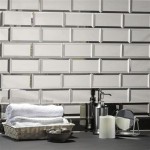How to Make a DIY Mirror Frame
Creating a custom frame for a mirror offers a rewarding way to personalize home decor and enhance the aesthetic appeal of any room. This project can be tailored to suit various skill levels and design preferences, from simple, rustic frames to more intricate and ornate designs. This article provides a comprehensive guide to constructing a DIY mirror frame.
Planning and Preparation
Before commencing the project, careful planning is essential. Accurate measurements of the mirror's dimensions are crucial for determining the necessary materials and ensuring a proper fit. Selecting the appropriate frame material is the next step. Popular choices include wood, metal, and plastic. The choice depends upon the desired aesthetic, budget, and skill level of the individual undertaking the project. Wood offers versatility and a classic look, while metal can provide a more modern or industrial feel. Plastic is a lightweight and cost-effective alternative.
Gathering Materials and Tools
Once the material has been selected, the necessary tools and supplies should be gathered. Common tools include a measuring tape, saw (appropriate for the chosen material), safety glasses, wood glue (if using wood), nails or screws, a hammer or screwdriver, sandpaper, and finishing supplies like paint or stain. Additional decorative elements, such as mosaic tiles, shells, or beads, can be incorporated based on the desired design.
Constructing the Frame
Frame construction begins by cutting the chosen material into four pieces according to the measured dimensions. For a rectangular mirror, this will involve two pieces matching the length and two matching the width. The ends of these pieces should be cut at a 45-degree angle to create mitered joints, resulting in a cleaner, more professional finish. Accuracy in these cuts is crucial for proper frame assembly. A miter box and saw can assist in achieving precise angles.
Joining the Frame Pieces
With the pieces cut, the next step is joining them together. Wood glue can be applied to the mitered edges, and then the pieces are carefully aligned and clamped together. Allowing adequate drying time, as specified by the glue manufacturer, is crucial for a strong bond. Once the glue has dried, small nails or screws can be used to further secure the frame, providing additional reinforcement and stability.
Finishing the Frame
The assembled frame can then be sanded to smooth any rough edges and create a uniform surface. This is particularly important for wood frames. Once sanded, the frame can be finished with paint, stain, or a clear sealant, depending on the desired aesthetic and the material used. Multiple coats may be necessary for optimal coverage and protection. Allow sufficient drying time between coats.
Attaching the Mirror to the Frame
Several methods exist for attaching the mirror to the frame. One method is using mirror adhesive, specifically designed for this purpose. Following the manufacturer's instructions for application is critical. Another method involves using clips or brackets to secure the mirror within the frame. This method allows for easier removal or replacement of the mirror if necessary.
Adding Decorative Elements (Optional)
For those seeking a more personalized touch, decorative elements can be added to the frame. These elements can be attached using glue, nails, or other appropriate methods depending on the material and design. Consider the overall aesthetic when selecting and applying decorative elements to ensure they complement the frame and the surrounding decor.
Hanging the Finished Mirror
The final step involves attaching hanging hardware to the back of the frame. The type of hardware will depend on the weight of the mirror and the wall material. D-rings and wire are a common choice for lighter mirrors, while heavier mirrors may require more robust hardware. Ensure the hardware is securely attached for safe and stable hanging.
Safety Precautions
Throughout the entire process, prioritizing safety is paramount. Always wear appropriate safety glasses when using power tools. Exercise caution when handling sharp objects like saws and knives. Follow manufacturer instructions for all materials and tools. Adequate ventilation is essential when working with paints, stains, and adhesives. By following these steps and taking necessary safety precautions, individuals can successfully create a beautiful and personalized DIY mirror frame.

30 Diy Mirror Frames Scratch And Stitch

20 Fantastic Diy Mirror Frame Ideas A Cultivated Nest

Easy Diy Stick Framed Mirror That Looks Expensive

20 Easy Creative Diy Mirror Frame Ideas

Diy Mirror Frame Upcycle That

Diy Stick On Mirror Frame Sawdust Sisters

How To Make A Diy Bathroom Mirror Frame Thediyplan

Build A Diy Round Mirror Frame Basic

30 Diy Mirror Frames Scratch And Stitch

20 Easy Creative Diy Mirror Frame Ideas

